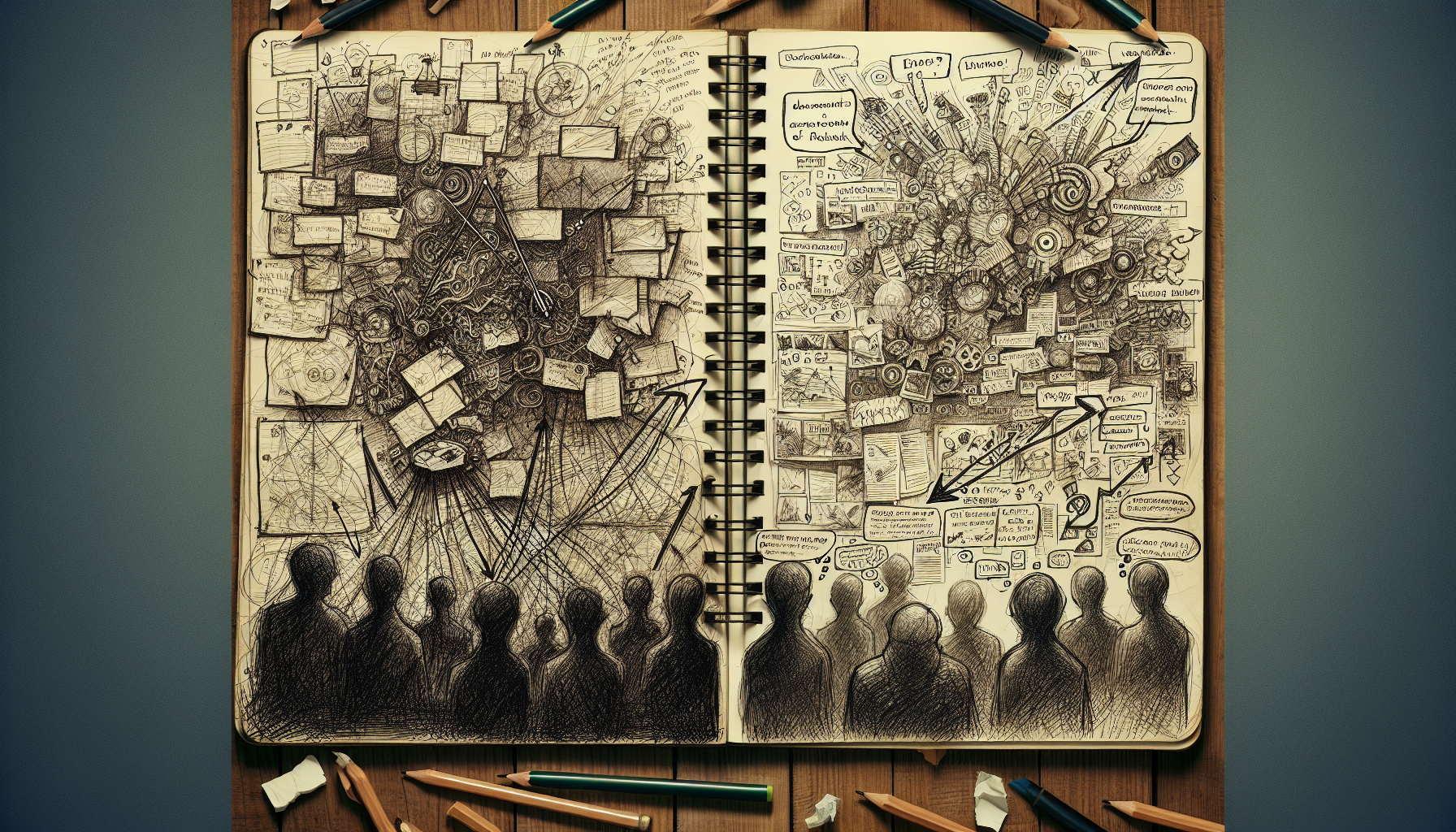Exploring the Lost Art of Handwritten Letters

Handwritten letters have been a primary means of communication for centuries, tracing back to ancient civilizations. The earliest forms of written communication can be seen in ancient Egypt, where hieroglyphics were used to convey messages on papyrus scrolls. As societies evolved, so did the practice of letter writing. The letters of great authors and historical figures, such as Elizabeth Barrett Browning’s passionate love letters or the poignant notes exchanged between soldiers during wartime, illustrate how handwritten correspondence has served as a vessel for emotion and personal expression. These letters have provided a tangible connection between people, allowing them to convey feelings that are often difficult to express verbally. In the 19th and early 20th centuries, the popularity of handwritten letters soared, with individuals eagerly waiting for the postman to deliver news from loved ones far away. However, the advent of the telephone and, later, the internet revolutionized communication, leading to a decline in the practice of writing letters. Today, it stands as a testament to a bygone era, yet its significance remains undiminished.
The Emotional Significance of Handwritten Letters
One of the most profound aspects of handwritten letters is their emotional significance. The act of writing by hand requires thoughtfulness and intention, creating a personal touch that digital communication lacks. Unlike a quick text or email, which can often feel impersonal and hurried, a handwritten letter embodies a deliberate effort to connect. A handwritten letter can evoke nostalgia and warmth, serving as a cherished keepsake that can be revisited over time. Research has shown that the physical act of writing can enhance emotional processing. According to a study published in the journal Psychological Science, individuals who engage in expressive writing—such as letter writing—experience improved emotional well-being. This suggests that handwritten letters can be a powerful tool for expressing feelings and fostering connections, allowing individuals to articulate thoughts and emotions that may be hard to convey in person.
The Resurgence of Handwritten Letters
Interestingly, there has been a resurgence of interest in handwritten letters in recent years. As people seek authenticity in their relationships amidst the superficiality of social media, many are turning back to this timeless form of communication. Events such as National Letter Writing Month, celebrated in April, encourage individuals to pick up a pen and send letters to friends and family. The growing popularity of stationery shops and the rise of social media accounts dedicated to showcasing beautiful handwriting and artistic lettering underscore this revival. Additionally, there is a growing appreciation for the aesthetic aspects of handwritten notes. Platforms like Instagram and Pinterest are filled with images of beautifully penned letters, illustrating that handwritten correspondence can be an art form in its own right. This resurgence reflects a yearning for connection and a desire to cultivate relationships that go beyond the fleeting interactions of digital communication.
The Benefits of Handwritten Correspondence
The benefits of engaging in handwritten correspondence are manifold. Firstly, it encourages mindfulness; taking the time to sit down and write a letter can foster a sense of calm amidst a chaotic lifestyle. In a world where multitasking is the norm, dedicating time to write a letter allows for reflection and presence. Secondly, it enhances creativity. The tactile experience of choosing paper, pens, and even stamps can ignite inspiration that might be stifled by digital formats. The very act of physically writing can stimulate the brain in ways typing cannot, fostering a different kind of creativity. Finally, handwritten letters offer a unique opportunity for self-expression. The penmanship, choice of words, and stylistic flourishes contribute to a narrative that is distinctly personal. Each letter becomes a reflection of the writer’s mood, personality, and artistic sensibility, creating an intimate connection with the recipient.
Getting Started: Tips for Writing Handwritten Letters
For those looking to embark on the journey of handwritten correspondence, here are some practical tips to get started: 1. Choose Your Materials: Invest in quality stationery that resonates with your personality. Whether it’s simple notecards or decorative letterhead, the right materials can make the writing process more enjoyable. 2. Set the Mood: Find a quiet space where you can focus. Light a candle or play soft music to create an inviting atmosphere that encourages creativity. 3. Be Authentic: Write as you would speak. Let your personality shine through your words, whether that means being humorous, poetic, or straightforward. 4. Take Your Time: Don’t rush the process. Allow your thoughts to flow freely, and remember that it’s okay to make mistakes. The beauty of handwritten letters lies in their imperfections and the unique character they exhibit. 5. Encourage Responses: When sending a letter, invite the recipient to write back. This can foster a beautiful exchange of thoughts and feelings, enriching the relationship.
In a world where instant communication is the norm, embracing the lost art of handwritten letters offers a refreshing alternative. Not only do these letters serve as tangible tokens of affection, but they also foster deeper connections and self-reflection. As we navigate the complexities of modern communication, taking a step back to write a letter can remind us of the beauty of personal connection and the power of our words. So, gather your stationery, carve out some time, and rediscover the joy that comes from putting pen to paper. In doing so, you may just find a piece of yourself that has been waiting to be expressed.
Handwriting Specialist
Forensic labs, educational institutions, arts organizations
Core Responsibilities
Analyze and evaluate handwriting samples for authenticity and stylistic features.
Provide consultations for clients regarding the aesthetics and emotional impact of handwritten correspondence.
Conduct workshops or classes on the art of handwriting and calligraphy.
Required Skills
Strong understanding of graphology and handwriting analysis techniques.
Proficiency in various handwriting styles and calligraphy.
Excellent communication skills to convey insights to clients and students.
Greeting Card Copywriter
Greeting card publishers, online stationery retailers, marketing agencies
Core Responsibilities
Create heartfelt and creative messages for a variety of occasions, such as birthdays, weddings, and holidays.
Collaborate with designers to ensure that text complements visual elements.
Research current trends in sentiment and greeting formats to keep content fresh and relevant.
Required Skills
Exceptional writing skills with a flair for storytelling and emotional expression.
Familiarity with different writing styles tailored to diverse audiences.
Ability to work under tight deadlines and manage multiple projects.
Personalized Stationery Designer
Stationery brands, custom printing services, design agencies
Core Responsibilities
Design and develop unique stationery products, including notecards, letterhead, and invitations.
Collaborate with clients to create custom designs that reflect their personality and occasion.
Stay updated on design trends and materials to enhance product offerings.
Required Skills
Proficiency in graphic design software (e.g., Adobe Illustrator, Photoshop).
Strong sense of aesthetics and attention to detail in design and typography.
Excellent interpersonal skills to engage with clients and understand their needs.
Creative Writing Workshop Facilitator
Community centers, educational institutions, creative arts organizations
Core Responsibilities
Lead workshops focused on personal writing, letter writing, and storytelling.
Provide constructive feedback to participants on their writing style and content.
Develop curriculum and materials that inspire creativity and self-expression.
Required Skills
Experience in teaching creative writing or related fields.
Strong organizational skills to plan and execute engaging workshops.
Ability to foster a supportive and encouraging environment for writers of all levels.
Content Marketing Specialist for Lifestyle Brands
Lifestyle brands, e-commerce platforms, marketing agencies
Core Responsibilities
Develop content strategies that emphasize the emotional and experiential aspects of products, including handwritten letters and stationery.
Create engaging blog posts, social media content, and newsletters that resonate with target audiences.
Analyze content performance and adjust strategies to enhance reach and engagement.
Required Skills
Strong writing and editing skills, with a focus on storytelling.
Familiarity with SEO best practices and digital marketing strategies.
Creative thinking to develop unique campaigns that stand out in a crowded market.


